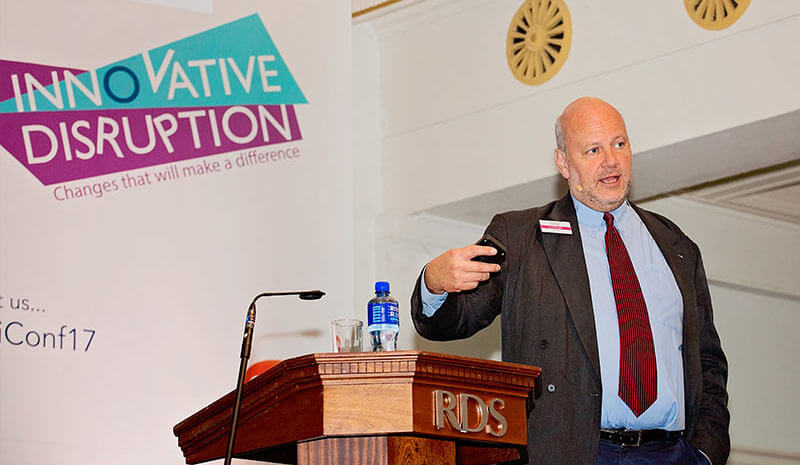The concept of private ownership of public hospitals was spreading significantly in the DACH region of Europe (Germany, Austria and Switzerland), Dr. Axel Paeger, CEO and founder of the AMEOS Group, which owns and runs 77 public healthcare facilities there, told the Conference.

AMEOS which is among Europe’s leading healthcare service providers, primarily serves German speaking regions, where its 77 healthcare facilities cover hospitals, long-term mental care facilities and long-term elderly care facilities.
Dr. Paeger, who founded the company in 2002, said it had grown from three employees to a current workforce of 13,000. He spoke on “Hospitals doing better.”
AMEOS operates healthcare facilities in German-speaking Europe and is one of the biggest private hospital operators in DACH region. It is shareholder of the biggest hospital operator in the states of Schleswig-Holstein and Saxony-Anhalt as well as in most AMEOS regions and the biggest operator of psychiatric hospitals in German-speaking Europe.
It has 53 hospitals and clinics and 24 elderly and mental care facilities, which it operates on behalf of the government. According to the magazine “Gesundheitswirtschaft” AMEOS – with 33% p.a. – has been the strongest growing health care company in the recent years. About two thirds of its revenue comes from general hospitals and it runs many of the largest hospitals. Every hospital has to provide basic care and different specialites are covered in different hospitals. It covers almost all disciplines, but does not provide heart transplants.
In 2011, we took over three hospitals with a deficit of €51 million. This year we are going to break even.
“We run public hospitals in private ownership and 96% of the patients we treat in these hospitals are public, “ Dr. Paeger told the conference.
“We don‘t just come into business when there is a lack of capacity in the public system. We get into business at the beginning in many regions, establishing our own hospitals. The Group also takes over hospitals which run into difficulties.
“There has been a doubling of private run hospitals since the beginning of the 1990s. The ownership structure of the hospitals has shifted considerably towards private. In 1991, of 2,411 hospitals, 46% were public, 15% were private and 39% not for profit. In 2014, of 1,979 hospitals, 45% were private, 35% non profit and 30% public.
“The hospitals we take over and integrate into our group are usually the ones with big problems. In 2011, we took over three hospitals with a deficit of €51 million. This year we are going to break even.
“Because of our high purchasing volume we can negotiate better prices. We also change some work practices For example, physicians and nurses should not spend their time doing work for which they are not qualified, like searching for records.
“The most critical aspect in hospitals is culture. In hospitals with the biggest problems we have been able to change culture quickly, because everybody was aware of the huge problems and they knew if the turnaround with AMEOS was not successful they would lose their jobs. “
Dr. Paeger said the big hospitals owned by the state were the ones with most problems. You could not fire people who had control until retirement, including physicians, so some of them cold be extremely relaxed and see no reason to change . “Most changes that are necessary do not provide a personal advantage to people. Therefore there can be a lot of resistance. There is a completely different culture in the hospitals we founded ourselves.
“In our regions, all ownership models are legitimate and equal, all ownership models may be successful and a pluralistic mix of differing models of ownership is seen as desirable. When comparing different models of ownership the key question is how to deliver the highest possible benefit to the patient and the institutions taking care of them.
Everybody was aware of the huge problems and they knew if the turnaround with AMEOS was not successful they would lose their jobs.
Dr. Paeger said publicly-owned hospitals, being under strong political influence, were disadvantaged. At the same time public ownership had the advantage that losses could be compensated by getting into additional debt to the public authorities.
There was more deficit spending by public authorities to cover the deficits of publicly owned hospitals than ever before and there was a huge backlog of capital expenditure (investments) in publicly owned hospitals.
However, private carriers including non-profit carriers must internally get away with challenges like e.g. salary increases for physicians or decreasing state resources for investments.
Dr. Paeger said what made AMEOS unique in the hospital market was:
- A broad and comprehensive medical offering – acute somatic, acute psychiatric, elderly and mental care homes.
- A well established and highly efficient regional management organisation.
- A regional organisation with currently 68 facilities providing state-of-the-art medical services for the population locally.
- Highly competent and experienced in turning around loss making facilities
- Balanced focus on cost-cutting, productivity and organic growth opportunities for all facilities.
- A solid financing structure provides basis to realize investment opportunities quickly.
He said when AMEOS took over a hospital, a regular quick win was the reduction of material costs by about. 8% while buying the same products. Increasing revenues by new offerings and additional business lines was second on the time line.
Reducing personnel costs by improving processes and by more adequate task sharing at work was the last effect achieved, because sophisticated projects were needed.
He said the material cost problem was at its core a management problem. Purchasing directors in public administration commonly lacked a clear stimulus for cost saving. Instead they often worked with known sales people, not using advantages of a transparent market e.g. via the internet.
Two approaches to improving the distribution of the clinical workload were implementation of multi-level nursing concepts to improve job profiles of nurses and implementation of clinical pathways to improve job profiles of physicians.

